Please don’t mistake the “moss look” for what is more likely to be black algae, diesel soot, top soil stains and or worse.
Stone is beautiful and expensive so don't let what you have to be hidden by filth and degraded by moisture.
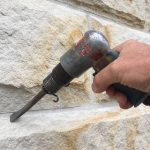
Pneumatically chisel old mortar.
An air chisel is the fastest way to remove mortar joins from block walls but if you don't have one of those a plugging chisel and a lump hammer will have to do. Various sized grinders will work too especially for paving and tiles but can make a terrible mess of the stone in the wrong hands.
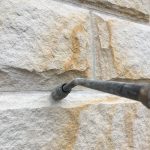
Lightly pressure wash.
Very lightly! Old Sydney sandstone will get blown to pieces with a powerful pressure washer. Rock-facing can loose all its definition and any of the sawn stones can be badly damaged and not seen until it dries. We are essentially just soaking the stone and the surrounding area and chasing the little creatures away for the next step...
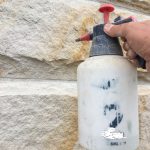
Chemical Clean.
Diluted pool chlorine removes most organic matter and doesn't hurt Sydney sandstone because it will not penetrate deep into the stone. But remember chlorine is like bleach and will damage you, plants, carpet, timber and anything organic if not used with common sense. We drown even thing around it in water and only paint the necessary amount of chlorine onto the sandstone...NOT anything that that it may damage. It can be left in place or hosed off, taking care not to hose it onto anything else.
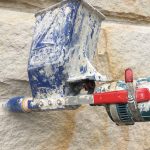
Re-Point.
Using a combination of Sydney sand (from the beach in Sydney and acts as the aggregate) and yellow or white brickies a.k.a bush sand (from the bush and gives it workability) results in an off white or grey cement that compliments the stone. There's a million coloured grouts and oxides but aesthetically these can go all wrong. The back of a cement back will tell you about a 1:4 ratio but there's volumes on mixes for restoring heritage sandstone, mostly very weak lime mixes to let the moisture out of the joins as well as the stone.
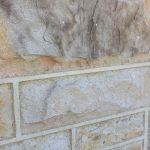
Tuck-Point?
Tuck-pointing or "raised-tuck" can unbelievably transform an old wall especially if it has big ugly joins that need to appear smaller and or be straightened out. This is skill that can take years to be proficient at and 90% of the tuck-pointing done around Sydney in the last decades leaves a lot to be desired. There is even some confusion about the name, old British masons will tell you that its called "ribbon pointing" and that tuck-pointing is regular mortar joins because its tucked in... makes sense bluey.
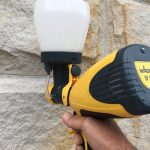
Seal?
We were never a big fan of painting a millimetre of silica over 130 million year old sandstone and thinking it would do much for long but the new true "impregnating" sealers are hard to fault. They soak in up to 15mm and really seem to change the make up of the stone. They also dry almost instantly and are invisible until water hits them and the bead up like a freshly polished car and still somehow really let the stone breath. Dry Treat give a 15 year warranty when applied by an certified user. Sealing is pointless unless your stone is spotless or your just sealing the dirt in.
